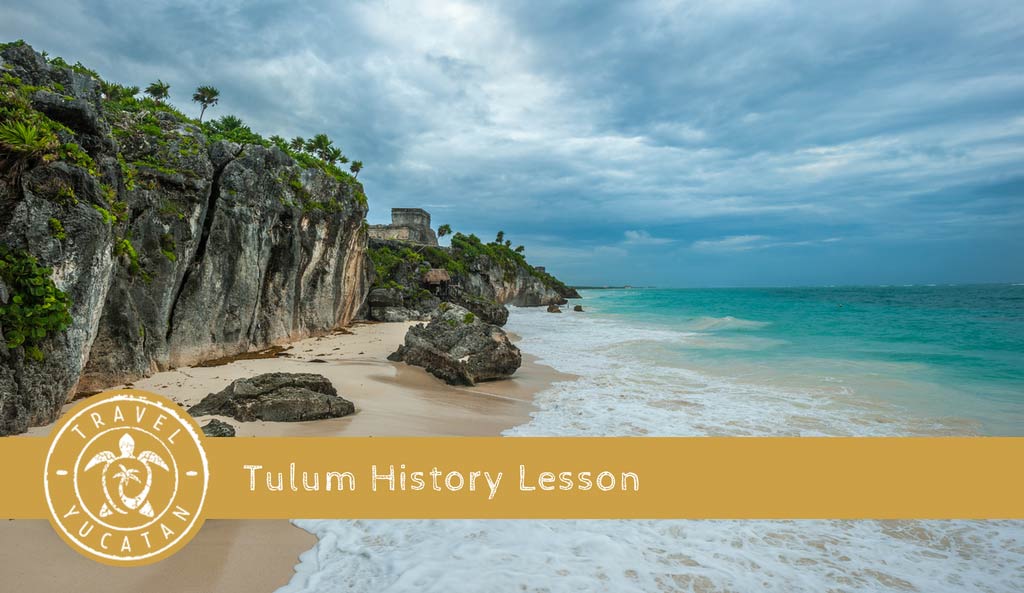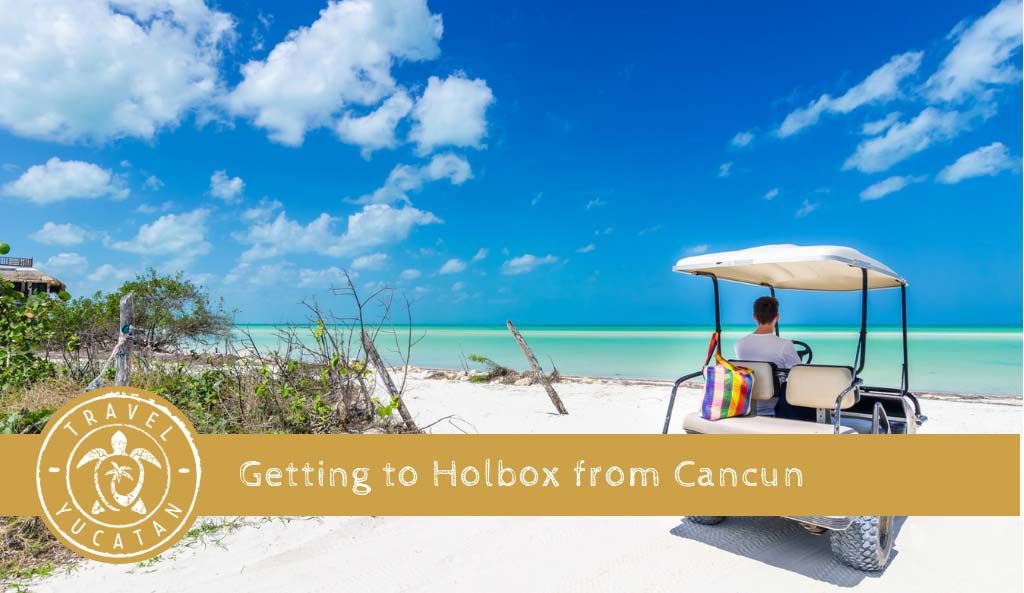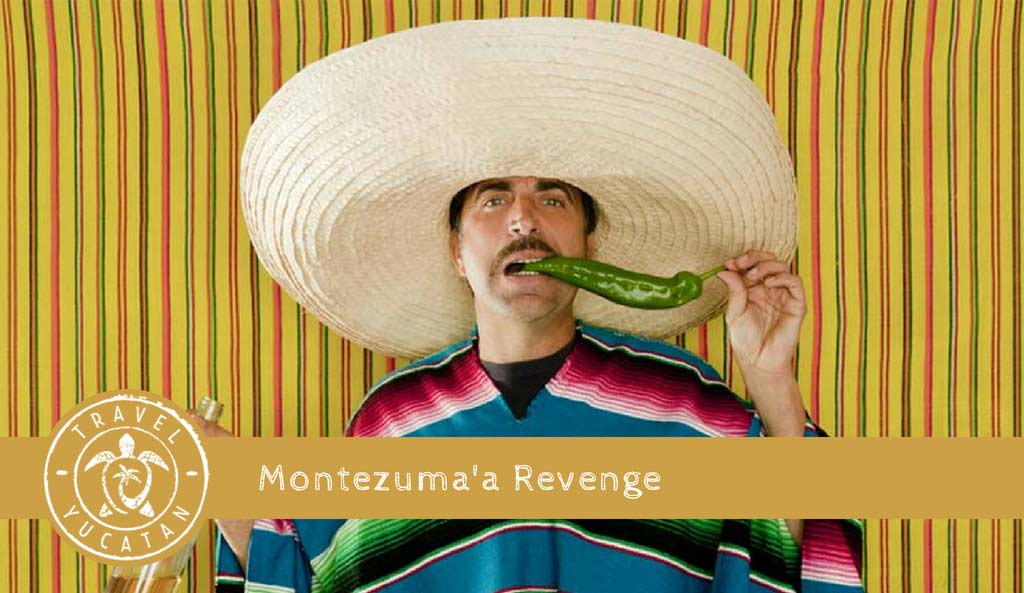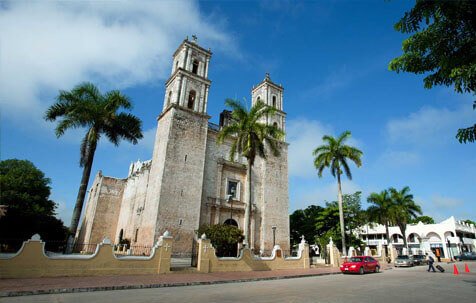 SOCIAL DEVELOPMENT
SOCIAL DEVELOPMENT
1. The history of the indigenous peoples of Mexico from the time of Independence and after the Revolution of 1910 shows that they have not had an equitable share of the development in comparison to the rest of the population. The inequality of economic and social development is manifested in the high degree of marginalization in those states that are the most remote and isolated including Oaxaca, Chiapas, Guerrero, Hidalgo, Yucatan, Campeche, Veracruz, and San Luis Potosi. These states include about 80 percent of the indigenous population of the country. In states where the indigenous peoples are a minority such as in the case for Tarahumaras, Tepehuanos, Guarojios, and Pima in the state of Chihuahua they are relegated to the more marginal areas of the states where they live. In the case of Chihuahua, the state has the lowest marginality index in Mexico, yet the indigenous zones are as marginal as Oaxaca or Chiapas.
2. The low level of investment in the indigenous areas over the past 50 years is reflected in the limited availability of wage labor at rates competitive to those as in the northern parts of the country. This relegates hundreds of thousands of indigenous peoples to a very low quality of life working almost as indentured servants in farms and ranches. This underdevelopment results in multiple forms of migration among the indigenous population, very low levels of medical assistance, poor diet, and the lowest levels of educational development of the indigenous human capital. This affects the level of justice rendered towards indigenous citizens and their communities, due to the high level of monolinguism and poor access to information.
Education
The Pre-Colonial Period
3. Mesoamerica was distinguished by a complex system of human capital formation which involved a process of acculturation beginning with the family, community and distinctive in each different ethnic region. In the case of the groups with the longest past, writing was formalized to commemorate events and special life accomplishments. Some of these date back to the Olmec culture with the stelae of the minnow, dated 159 BC, that even today is being deciphered and reconstructed through the use of existing Zoques and Mixes languages. The colonial invasions found, an educational organization in the Central Valleys of Mexico, that the Aztecs had administered in two parallel systems depending on the social rank of the students, who were divided into:
- The macehuales (plebeians) with two types of schooling, one for good manners and the other for warfare. This school was called the telpochatli or “house of youth”, but they also had other schools, such as the cuicacalli, or the “house of song.”
- The pipiltzin (aristocrats) trained to become priests, architects, painters, doctors, poets, singers, and soldiers. The school for the nobility was called the calmecac where the new generations trained to occupy the highest posts of the priesthood, army, justice, and bureaucracy. In this school special emphasis was placed on the knowledge of religion, reading and writing of the codices, and law and astronomy.
4. With the Spanish Conquest of Mexico came a new era of forced education aimed to convert the indigenous population to Catholicism and to unify the language of the New Spain. In 1528, Fray Juan de Zumarraga founded the School of the Santa Cruz de Tlatelolco for the indigenous people where they could be trained to live within the Spanish colonial system. However, the advocates for the indigenous peoples debated the merits of imposing a new language upon the conquered peoples without recognition and respect for the native languages and cultures. From this time on the educational and language policies were manifestly against the maintenance and recognition of native languages among the indigenous peoples who, in isolation, maintained their own informal systems of education under the tutelage of the family and the community. The entire educational policy was oriented during the colonial period to the formation of the criollo and colonial cadres, to the total exclusion of the indigenous population from systems of formal education.
Educational Language Policy in Contemporary Mexico
5. With Mexico�s Independence in 1825, the new nation-state advocated equal rights for all citizens under the law, principles adopted from the French Revolution. In parallel, there was a need to form a new homogeneous national identity that denied the cultural pluralism that had existed prior to the colonization and had existed for millennia. Since this time the language policy adopted by both liberals and conservatives has persisted in its effort to systematically eradicate indigenous languages. These have been classified as inferior �dialects.”
6. With the Mexican Revolution the educational policy was expanded according to Article 3 of the Constitution of 1917 providing education for all the citizens. Education for the indigenous peoples began in 1923 and continued through 1950. This policy was essentially one of assimilation and incorporation of the population into the national life. The Department of Indigenous Education and Culture was founded in 1923 with the objective of making the indigenous peoples literate and Spanish-speakers. These programs were consolidated under the Casas del Pueblo and would later be converted into the Mexican Rural School, reinforced by the Cultural Missions. These were underpinned by an ideology of denial of the Mesoamerican cultures, and reinforced Hispanic biases of social evolution based on a European model.
7. In 1926 the House for the Indigenous Student (a boarding facility) was established in Mexico City with the intention that the indios would not only attend school but would have daily contact with the mestizo and criollo population. Under this principle of assimilation it was assumed the indios educated could become elements of civilization and progress.
8. In 1932 following the previous model, 11 boarding schools were created. Indigenous education continued under the same premises, with a methodology of exclusive use of Spanish in the curriculum and rejection of local languages.
9. In 1936, in line with the USA�s model, the Department of Indigenous Affairs was created. It continued the philosophy of encouraging Mexican Indians to reject their indigenous customs and values. The boarding schools expanded in number to 33 with nearly 3,000 students. To reinforce this methodology, the National School of Anthropology and the Rural Medical Schools were created, whose objectives were to achieve the consolidation of the assimilation of the indigenous peoples.
10. In parallel to this policy, the first Assembly of Linguists and Philologists was held in 1939. It recommended the use of native languages in the educational and literacy program for adults; the beginning of the educational program of indigenous children; and the use of teachers from indigenous groups. Two pilot projects were launched, one in the Purepecha region of Michoacan, the other in the Raramuri region of the Tarahumara. This was the beginning of the Literacy Institute for Monolingual Indigenous Peoples. This new concept would enter into conflict with the model that advocated the assimilation of the indio s, a conflict that persists even today.
11. In 1940 when the first Inter-American Indigenist Congress was held, the participants of the American countries concluded that the indigenous education must take into account the local language, culture, and personality of the students. This new current was followed again in 1948 with the formation of the National Indigenist Institute (INI), which demonstrated the value of including native teachers into the educational system in order to educate students in two languages simultaneously, while respecting both local languages and cultures. In 1963 there were 350 indigenous teachers in 11 inter-cultural indigenous regions. In the same year, the National Educational Assembly recommended special measures for bilingual education as a part of a new national educational policy. Bilingual education was to be taught by indigenous teachers, who would also be advocates of the indigenous groups. To this end, the National Service of Cultural Promoters and Indigenous Teachers was created. This system expanded and by 1970 there were approximately 4,000 bilingual teachers.
12. The special Directorate for Extra-school Education for the Indigenous Peoples was created in 1971 within the National Secretariat for Education. This Directorate consolidated the various programs that had been created and institutionalized the use of bilingual teachers. However, the basic education for indigenous children that had been extended by the monolingual rural school system resisted this new policy and continues to control thousands of rural schools with ideologies of cultural assimilation.
13. In 1978 the Directorate for Indigenous Education was instituted as a part of the national formal system of education. Finally, in 1993 after the changes in Article 4 of the Constitution referring to indigenous rights, the general Education Law formalized the teaching of Spanish as the national language without precluding the promotion and development of indigenous languages.
14. At this time there were special mono-lingual education programs initiated for indigenous education as in Chiapas (PRODECH) and Oaxaca (ILSEO) that were oriented to indigenous children�s basic education only in Spanish.
Quality of Indigenous Education
15. The unequal conditions in which the indigenous peoples live, in contrast to the rest of the society, are mirrored in the educational system. According to the 1990 Census, there are at least 13,179 settlements with a density of over 70 percent indigenous language speakers. This is a population of 4 million people with an illiteracy rate of those over 15 years of age of 46.6 percent. This rate is four times higher than the national average (12.4 percent).
16. In the settlements referred to above, 76 percent had not finished primary school, 44.2 percent above that found in the settlements with a low density of indigenous language speakers. In addition, there are at least 4,000 settlements with a population density of between 30 and 60 percent of indigenous language speakers with a population of over 2 million whose level of illiteracy in the age group of over 15 years is over 30 percent – double the national average. The same 1990 Census shows that 21 percent of the children between ages 6 to 14 did not attend school.
17. One result of the language policies was expanded use of Spanish among the indigenous population, as demonstrated by the figures from censuses. In 1930 one million persons were classified as bilingual, and in 1990 there were over 4 million bilinguals out of a total of 6.8 million people over 5 years of age, classified as indigenous.
| 1930 | 1,185,162 | 1,065,942 |
| 1940 | 1,237,018 | 1,253,891 |
| 1950 | 2,447,609 | 1,652,341 |
| 1960 | 1,104,955 | 1,925,299 |
| 1970 | 859,854 | 2,251,561 |
| 1980 | 1,174,594 | 3,699,653 |
| 1990 | 836,224 | 4,237,962 |
| Indigenous Bilingual teachers | 40,000 |
| Indigenous children attended | 930,000 |
| Rural Schools (pre-primary and primary) | 7,581 |
| Books in Indigenous Languages (primary school grades 2-4) |
47 indigenous languages and variants. |
The National Council for Educational Promotion CONAFE was created in 1987 for the purpose of educating communities with less than 200 inhabitants. CONAFE hires indigenous teachers that have completed the sixth grade. They operate now in 2,000 settlements.
18. According to the 1990 Population Census there are approximately 1,441,000 children of school age that speak an indigenous language. Of these, 250,856 are monolingual indigenous language speakers. The pre-school centers and bilingual primary schools are attended by approximately 921,269 children. Many others attend either other pre-school centers or general primary schools located in indigenous areas. In order to provide bilingual and bicultural education texts have been published and distributed free of charge in 32 languages for the first grades of basic education. These books, however, are not in use among the various systems operating in indigenous areas.
19. The National Council for Educational Promotion (CONAFE), has a system of bilingual education for indigenous children in communities with less than 200 inhabitants, using bilingual teacher in 2,000 communities. The National Educational Institute for Adults (INEA) assists various indigenous regions and some urban areas.
20. It is not known precisely how many indigenous children have no access to basic education. According to the estimates of INI, 28.32 percent of the children do not attend school in the municipalities consisting of over 70 percent indigenous population. (Embriz 1994:44). Many of the children without access to schools live in communities of less than 100 inhabitants.
21. Thirty one percent of the bilingual primary schools are in fact monolingual. Of these only 20 percent have six or more teachers. In the bilingual primary schools only 30 percent of the students complete primary education compared to 60 percent at the national level. If we compare the situation today with the decade of the 1960�s it would seem that the existence of 7,581 primary schools and nearly the same number of pre-school centers with 39,045 bilingual teachers shows great progress. But the statistics show that neither the quality nor quantity of education is reaching the indigenous population. One attempt to improve the quality of bilingual education was the creation of the program to produce educational materials in vernacular languages and reflecting their individual cultures.
22. Although the government�s educational policies have evolved to include new methodologies and programs for the indigenous population that empower and respect their languages and cultures, including bilingual methodologies, these implementation of these policies still faces a number of obstacles:
-
- Indigenous teachers are not adequately trained and in particular have not been trained in bilingual and bicultural teaching methods. Their knowledge of Spanish is limited to the basic alphabet.
- Bilingual teachers that were acculturated still resist of bilingual educational programs that give priority to indigenous languages. In some cases these teachers have forgotten their native language, in other cases they teach in indigenous areas other than their area of origin.
-
- Within the communities, often the indigenous language is considered a barrier to acceptance in the broader society and parents fear that educating their children in a maternal language will harm their future.
- Many schools in indigenous areas lack the necessary and appropriate teaching materials.
- The quality of educational services in indigenous communities continues to be seriously deficient as is illustrated below.
| Schools with all 6 grades of primary education | 38 percent |
| Schools with a single teacher responsible for 4 grades of primary education. |
31 percent |
It is important to underline that while statistics show a greater number of indigenous peoples that are Spanish speakers, this does not necessarily mean the loss of their own languages. The use of Spanish is quite limited and serves as a vehicle for communication with the wider society. It is used either in commercial and market transactions, in the wage sector, and in the relations with government institutions. The use of indigenous language persists in the family and in community relations as for instance the communal assemblies.
23. There is still a separation between the formal and informal educational system. The latter still prevails within the household and continues to play a critical role in the preservation of ethnic identity. The possibility of imparting knowledge through the use of indigenous languages is still far off because there are no alphabets, programs, dictionaries, or lexicons that are communally shared. The indigenous teachers that have been acculturated now have to reverse the process to reintegrate into their communities of origin. In addition, the old prejudices continue with concepts of superior-inferior relations between mestizo and indigenous peoples
24. The illiteracy rate among the indigenous peoples is extremely high and particularly high among women.
| Total population | |
| Men | |
| Women | |
| Men over 65 years of age | |
| Women over 65 years of age |
In addition to illiteracy, the ignorance of Spanish makes the indigenous population even more vulnerable and unable to relate to the rest of the population in equal terms. Women are the most vulnerable since they are the group with the highest levels of monlingualism and illiteracy. Of 10 indigenous children that enter school, four are girls and only two complete the fourth grade.
25. The mapping of educational data clearly show the condition of the indigenous population, taking into account differences in age and indigenous regions. The indigenous world knows Spanish yet there are regions such as the Tarahumara, Huichol, and some of the indigenous groups in Oaxaca and Guerrero where over 50 percent of the population is illiterate and where the majority of the children that attend the first years of primary education never finish nor continue with further schooling. This situation can be explained to a large extent because the educational policies for the entire population are highly dependent on whether there is economic stability or economic crisis in the country.
26. Mexico is a multilingual society. Demands of the indigenous peoples such as the Zapatista Front for National Liberation, the various congresses and assemblies of bilingual teachers, and other indigenous organizations, include the right of these people to the use of their own languages and to the continuation of their cultures, within a context where they can exert control over their social and political institutions with autonomy.
27. This calls for new social capital capable of improving the quality of education. Two programs have been created to address these needs. (a) training ethno-linguists and linguists to know and analyze indigenous languages within their own cultural context; and (b) training bilingual teachers at a high educational level such as in the Social Anthropology Center for Research and Superior Studies and the Pedagogical University.
28. Mexico�s language policy has experienced certain changes in recent years, particularly due to the change in Article 4 of the Constitution that recognizes that “the Mexican nation has a multicultural composition, based on its original peoples. The Law will protect and encourage the development of their languages, cultures, customs, resources, and specific forms of social organization. It will guarantee its inhabitants effective access to the state juridical system.” In practice there are two contradictory and opposing systems. Even if not explicit, the premises of direct education in Spanish foster monolinguism and language loss in indigenous bilingual communities as well as in monolingual indigenous communities. The alternative of bilingual and bicultural education has not expanded to cover all the indigenous regions of the country despite a cultural desire to maintain multiple languages. The use of multiple indigenous languages is restricted when these are used as a tool to facilitate Hispanization and are not taught nor intrinsically valued. Indigenous languages are rarely taught after the third grade of primary school and there is little effort to use them in wider communication media, literature, movies, theater, etc.
29. Recently, some states such as Oaxaca have taken important steps in the regulation of education for indigenous peoples.
Article 7. – It is the obligation of the State of Oaxaca to impart bilingual and bicultural education to all its indigenous peoples, with plans and curriculums that integrate knowledge, technologies, and value systems corresponding to these peoples. This system of education will be conducted through the use of maternal languages and with Spanish as a second language. Plans and curriculums that include knowledge of the of the State�s ethnic cultures and regions will be incorporated into the curriculum of the remainder of the population.
Ley Estatal de Educación de Oaxaca , 1996.
30. The future perspectives of the educational policies towards indigenous peoples tacitly recognize the role of informal education imparted within the family (customs, values, medical traditions, music, and forms of social organization. Informal schools have been established and accepted by the indigenous population as a symbol of prestige. The changes adopted by the official national educational system should therefore ensure the following:
30. The future perspectives of the educational policies towards indigenous peoples tacitly recognize the role of informal education imparted within the family (customs, values, medical traditions, music, and forms of social organization. Informal schools have been established and accepted by the indigenous population as a symbol of prestige. The changes adopted by the official national educational system should therefore ensure the following:
-
- Training of teachers to analyze the specific social and economic needs of the intercultural regions.
- Producing teaching materials reflecting the cultural content of the various regions in the primary and secondary school texts.
- Investigating and rescuing the cultural heritage of the regions including legends, customs, technologies, and forms of social organization of indigenous communities.
- Recognizing and incorporating the informal education that takes place within the indigenous family.
Health
Traditional Medicine
31. Indigenous groups maintain a body of medical knowledge which sincretizes medieval medical knowledge derived from the Spanish colonial period, African medicinal practices, and contemporary medicine. These link the empirical and the magical. Traditional medicine is not simply a juxtaposition of different concepts about the treatment of diseases but rather operates as an integral system linking the physical and the psychological. The accelerated introduction of contemporary medicine into indigenous areas and in all regions of the country has produced yet new permutations.
32. Traditional medicine, as practiced by various specialists such as the “yerbatero“, who cures through the use of plants, midwives, and the shaman or ” curandero” is based on the concept that knowledge is gained through revelation and that it is through the grace of God or through the use of supernatural forces that they are able to cure. Where doctors are subjected to a process of education, they acquire academic knowledge about the causality of illnesses and are trained in the practice of diagnosis, prognosis, and therapeutics, all based on strict empirical experience. The traditional medical practitioner, by contrast, affirms that his knowledge may come from revelation or divination, and treatments are learned informally based on mystical experience. Yet, this knowledge does not preclude empirical observation and the ability to differentiate between natural causes of disease and psychological ones.
33. Empirical diseases include accidents, wounds, lesions, fractures, poisonous bites, and some physiological processes such as labor and birth. These are treated using empirical knowledge, which is logically consistent, verifiable, and understandable. This category of diseases includes those caused by “air” introduced into the body which may cause colic or other symptoms. There is also “headache” originating through a sudden chill and transformed into illnesses classified as “pneumonia” or “colds.” Others are produced through heat. Sudden heat produces “chincual” in children or “angina” in adults. Similarly, there are diseases caused by ingesting of hot or cold foods that weaken the body. Diseases can also be caused by over-eating resulting in “empacho” or by overdoing sexual relations, resulting in “empachos” for both men and women. Disease is also caused by breathing bad air found in latrines or marshes that result in a condition called “andancia”, and finally diseases caused by microbes that include chicken pox, measles, whooping cough, venereal diseases, dysentery, intestinal parasites, malaria, etc.
The diseases classified as supernatural include those that are caused by the wrath of God or gods, a punishment for disobedience, which is classified as that which originates in a violation or sin. This group encompasses most of the diseases having a supernatural origin. Those who forget their duties towards their ancestors, their religious obligations, the cult of old divinities, interrupt periods of dictated sexual abstinence or ignore or deny the loyalty owed to the community and services to be rendered to it, cause the wrath of god and suffer illness. The supernatural can range from the “chan” or spirit from a river or water source affronted by a lack of piety in soliciting its help to cross a river; to the abstract Catholic religious theology that produces an epidemic or pestilence because of general immorality. All these are diseases classified as punishments from God.
A second group of supernatural diseases has sorcery as its origin. Here, there is still the underlying concept of dependency of the human on another agent, but in this case the agent is another human endowed with negative or hostile desires that produce a disease. A great percentage of homicides in the indigenous regions reported to the local authorities, are the result of actions taken to eliminate the sorcerers to avoid illness and epidemics. These sorcerers called “nahuales” “sukuruames”, “iloles” or witches, are only curers that are endowed with mystical powers capable of casting the evil eye, bewitchment, or other evils. Generally these are curers that have not been successful in resolving anxieties nor maintaining the balance of social relations which ensures the cohesion and continuity of a community�s security and balance.
Last of all are supernatural diseases caused by the introduction of a foreign body into the organism. The spirit of the disease is manifested, among the more remote indigenous peoples, as small stones, thorns, worms, or demonic possession.
34. When there is no hypothesis about the origin of a disease, the healer relies on an indirect interrogation through divination, or through induced states of possession or mystical trance. These techniques permit the healer not only to give a diagnosis but the prognosis as well, which he, the patient, and the patient�s kin all consider to be the most favorable and likely. There are many different techniques used to elevate the shaman or traditional healer from the natural to the supernatural plane. By these techniques which include the casting of grains of corn, the examination of the egg to which a disease has been transferred, the interpretation of dreams, or the revelations emanating after the consumption of hallucinogenic drugs such as peyote, ololiuhqui, nananacatl, or another one of the set of sacred herbs, the healer divines the cause of the disease, the god or author of the disease, the absence and/or capture of the soul, or the injury suffered by the animal linked to a person. In addition, the same techniques will also tell the shaman or healer whether the patient will heal or inevitably die. In the first case, the form of treatment will be decided upon. In the case of inevitable death, all efforts will be directed to the preparation of rituals to facilitate the transition of the patient to the invisible world and to prevent him from returning to the physical world where his presence would cause disease by his very presence.
35. Traditional medicine described here in its broadest sense is the patrimony of the indigenous communities. There are groups that have gradually abandoned ancestral practices substituting them with reliance on health centers. However, as demonstrated in the Profiles and Diagnostics of the various groups the traditional medical practitioner still constitutes a formidable resource as carrier of traditional knowledge, and is often the only person to whom patients can direct themselves for the cure of these diseases. The incorporation of the traditional medical practitioner in health programs and campaigns is an important factor in reducing mortality among women and children in indigenous areas, and should be recognized as an important part of indigenous peoples� social capital. The current poor quality of health services and limited numbers of trained health personnel, combined with their patronizing attitudes towards traditional medical knowledge and practices, inhibit the diffusion of western empirical scientific knowledge and better medical practices. This is a problem that national level health institutions have recently tried to address.
In Mexico there is a pluralistic or mixed health system where there is a coexistence of modern medical knowledge, traditional medicine, and domestic remedies. For a great section of the Mexican population, and more specifically for the indigenous population, traditional medicine constitutes the main and often the only health resource. According to a 1984 study of the National Institute of Social Security, there is one traditional practitioner for every 500-1,500 people.
36. In spite of having been marginalized and even persecuted at various times, the traditional practitioners have always been a strongly cohesive group, a factor contributing to ethnic self-definition, and a publicly recognized health source. There are many examples of their importance in the delivery of health services. In the mountains of the State of Guerrero, for instance, a UNICEF and Health Ministry investigation showed that 70 percent of births were attended by traditional midwives, 17 percent by kinswomen to the woman giving birth, and only 3 percent by western professional practitioners. It is estimated that in Oaxaca, traditional midwives who may or may not have received any form of institutionalized training attend to 6 percent of the births.
Nevertheless, traditional medicine is practiced in conditions of great disadvantage. Modifications to the Constitution�s Article 4 may result in recognition of the role of traditional medicine as an essential component of the indigenous peoples� cultures. It ought to be accompanied by corresponding changes in the sector policies at the national level corresponding to the social and technical importance traditional medicine occupies among these groups.
37. There are already, a series of projects designed to create regionally based health centers as well as hospitals where both modern as well as traditional medicine would be practiced. This experience began in the Sierra Norte in the State of Puebla, in Cuetzalan, with the creation of the first integrated medical hospital staffed by both western-trained doctors as well as traditional healers (INI Doctors and practitioners from the Nahua Totonaca Organization of the Cuetzaltec Region). The hospital has the support of the INNSZ for surgery; the assistance of the SS for the Tuberculosis Program, and the support of the IMSS-Solidaridad to transport patients to more elaborate health centers. Through a presidential directive the INI was given the mandate in February 1992 to further this experience and create additional integrated health centers in indigenous areas. These include the Regional Health Program in El Nayar, Nayarit. The creation of the Mixed Rural Hospital Jesus Maria in the Cora Huichol region. There are several centers now operating: Cuetzalan (Puebla) Jesus-Maria (Nayarit), Capulapan (Oaxaca), and Yaxaba (Yucatan). There are also small clinics with traditional healers, among which the most notable are the San Juan Chichicaxtepec in the Mize area of Oaxaca, and over 100 community pharmacies. Functioning under a different model since 1990 there is in San Cristobal Las Casas, the Center for the Development of Traditional Maya Medicine, belonging to the oldest traditional medical organization, the OMIECH (Organization de Medicos Indigenas del Estado de Chiapas).
Special mention should be made to the vital organizational movement among traditional practitioners � started publicly in Chiapas over a decade ago. It has culminated with the creation of over 57 organizations, representing over 30 different indigenous groups and 18 states of the republic, in the Consejo Nacional de Medicos Indigenas Tradicionales, who delivered, in 1992, the first National Plan for Indigenous Traditional Medicine.
38. According to information compiled by the Center for Epidemic Vigilance, in 1991 the ten main causes of illness among indigenous peoples were of infectious origins in 50 percent of the cases. Acute respiratory illnesses were in first place (59.8 percent), followed by digestive tract illnesses (31.8 percent).
39. Besides these, there is a high incidence of skin disease including deep fungal infections (dermatomicoses), scabies, ringworm, and micomicoses. Many of these are found among populations debilitated by low nutrition and lack of sanitation. Only two non-infectious pathologies were registered among the ten main diseases: poisoning and traumas, which together occupied fifth place, and hypertension in eighth place.
The most affected age groups corresponded to the two extremes, in particular those under five years of age. The remainder of the population aside from these illnesses is affected by other already mentioned causes such as traumas, poisoning, and hypertension.
40. Given the level of aggregation of these data that are gathered at the level of each Sanitary Jurisdiction, it is not possible to obtain information about morbidity at the level of each of the indigenous municipalities. There is also a marked under-registration of morbidity because of the lack of health centers in indigenous areas, as well as a low level of registration of these diseases because the level of provision of health services for them is low in the health centers.
41. On the other hand, the results registered by a survey in the areas covered by IMSS-Coplamar, show a morbidity profile among the indigenous peoples due to the use of medicinal plants. These were used in 38 percent of the documented cases for gastrointestinal diseases, 14 percent for respiratory diseases, and 14 percent for curing skin lesions, sub-cutaneous infections, traumas, muscular and rheumatic pains, and infectious and poisonous animal bites. An additional 13 percent of the cases documented the use of plants for treatment of fever, chills, and headache pain and joint pain in general and 6 percent for the treatment of symptoms related to female reproductive problems.
42. Statistical information about mortality in indigenous municipalities registered slightly over 30,000 deaths in 1990, which implies a gross mortality rate of 5.8 deaths per 1000 inhabitants, a figure which is 10 percent over the national average of 5.2.
43. There is a wide variation in the statistical information. On one hand the low rates are registered in the states such as Durango (2.1 percent) Jalisco (2.6 percent) and Quintana Roo (2.9 percent) which show low rates of mortality due to under-enumeration. On the other hand, areas with rates far above the national norm are reported in areas such as Chihuahua (9.3 percent), Mexico (8.0 percent) and Puebla (8.6 percent).
44. In general, mortality rates are higher where the indigenous population is larger. Mortality rates are also correlated with age groups in the indigenous population with a higher than the national average rate among those under five years of age (26 percent compared to 20 percent. However, the data disaggregation in the age group 1-4 years of age shows important differences.
Infant mortality was lower (14 percent compared to 15.5 percent in the national average), while in the group of pre-school age the rate is much higher among the indigenous peoples (13 percent compared to 4.8 percent). This percentage is even higher (14 percent) in the municipalities with an indigenous population of over 70 percent. The lowest rate of infant mortality reported is most likely due to significant under-reporting, while the mortality rates of pre-school age cohorts are more likely genuine.
45. Mortality by sex also shows that rates are higher among men. Nevertheless the rate reported is lower than the national average (124 compared to 130), a situation observed in 13 of the 16 selected States. The difference is even larger when the information is broken down by municipalities with a high indigenous population density of over 70 percent which shows a male mortality rate of 121.
46. The epidemiological profile of the indigenous population (municipalities with 40 percent or higher indigenous peoples) shows important differences contrasted to the national level data.
The five main causes of mortality in the country as a whole correspond to non-contagious diseases, while among the indigenous peoples three of five main causes of mortality are due to contagious infectious diseases including gastric, pneumonia, influenza and measles.
47. It should be indicated that the latter appear exceptionally in the incidence registered between 1989 and 1990 and that after that epidemic the rate is lower again. Infectious gastric disorders are the main cause of deaths in 7 out of 16 municipalities while these occupy only a 7th place at the national level. This rate overall of 74.7 deaths for every 100,000 inhabitants (and 83.6 for those municipalities with a high density of indigenous peoples of over 70 percent is in sharp contrast to the national rate of 27.3 per 100,000 inhabitants globally. In spite of this it appears in the first place in only 7 of the selected states.
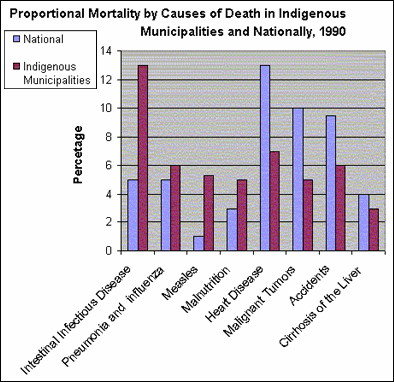
48. Among the twenty main causes of death there are some that are higher among the indigenous population. Such is the case of deaths related to nutritional deficiencies, with a 6th place compared to 11th place nationally; tuberculosis in 11th place and 16th place nationally; and anemic disorders in 13th place and 17th nationally.
49. There are others, however, that are less frequent among the indigenous population such as tumors that occupy 7th place contrasted to 2nd place nationally; Diabetes Mellitus in 15th place in indigenous populations and 4th at the national level; and cardiovascular diseases that are in 12th place compared to 8th at the national level.
Overall the mortality profile of the indigenous population is similar to others in less developed countries. There is a predominance of poverty-related diseases and a lower incidence of diseases common to more developed societies where the incidence of chronic degenerative disease is higher.
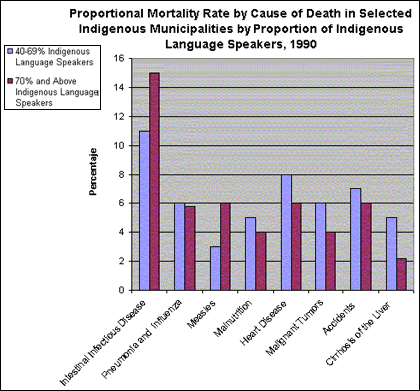
Marginality and Poverty
50. Studies focusing on marginality and poverty have taken two different approaches. One focuses on the satisfaction of basic needs and the other focuses on household income. The second approach includes the identification of factors considered to be unsatisfied basic needs.
51. The National Council on Population (CONAPO) has focused on nine indicators to measure the degree of marginality:
-
- Percentage of illiterate population over 15 years of age
- Percentage of population over age 15 not having completed primary school
- Percentage of occupants in houses without drainage and sanitation
-
- Percentage of occupants in houses without electricity
- Percentage of homes without running water
- Percentage of homes with crowded conditions
-
- Percentage of occupants in homes with dirt floors
- Percentage of population in settlements of under 5,000 inhabitants
- Percentage of population employed with income below two minimum salaries
52. There is a clear correlation between these indicators and the indigenous population and their level of marginality, especially in rural municipalities where the indigenous peoples show the highest degree of marginality. This marginality is considered to be a structural phenomenon, the result of development over the last four decades, resulting in the exclusion of the indigenous population from the process which permits the satisfaction of their basic needs (Alexis Panagides, Indigenous People and Poverty in Latin America).
The 1990 Census shows that 96 percent of the indigenous people live in municipalities with marginality rankings of high and very high and 41 percent of these live in very high marginality. The seven states with the highest incidence of poverty are: Chiapas, Oaxaca, Guerrero, Hidalgo, Veracruz, San Luis Potosi, and Puebla, which coincide with the indigenous municipalities of highest marginality.
53. An example is the state of Veracruz that has important natural resources and developed areas. It is classified as a state of high marginality due to the presence of the indigenous population. One of its municipalities, Tehuipango, with a Nahua population in the Zongolica Sierra is the most marginal in the country.
54. Examining these indicators might lead to think that the indigenous communities are static traditional societies resistant to change and defending ways of life that are separate from the national population. This is false. The indigenous peoples are intimately tied to the economic and social changes in the country. Their poverty and marginality is the result of their systematic exclusion due to cultural prejudices.
55. To mitigate and improve this condition of high marginality it is necessary to reorient the programs that are targeted to this population which is to say, the acceptance of the fact that the indigenous peoples are holistic and integral social systems with their own forms of government. They have operated for over 500 years as such. Health, education and production problems can be solved with the integration and participation of the indigenous population but it is required that their own forms of organization and government be recognized and accepted as well as their self-recognized needs. Many of these groups and their representative organizations indicate that they are not willing to pay for development with the loss of their soul, which is their culture.
56. The economists� views of indigenous peoples represent an obstacle to their development and to the country�s development. It is the wrong paradigm because industrialized nations, even with great changes, have maintained their own cultures and identities. It is this that the indigenous peoples have been demanding over the last 20 years, and is reflected in their economy, agricultural systems, and artisan tradition.
57. To measure marginality in terms of the CONAPO indicators leads only to a partial recognition of the problems confronting these peoples. In the majority of their communities the lack of basic services is the norm. Yet, the quality of life measurement transcends the indicators. There are indigenous areas with natural resources that allow sustainability and continuity but where the last ten years agricultural policies have resulted in highly negative impacts. The main problems are those of a lack of agricultural credit for sustainable production, assistance in marketing, and respect for local forms of government.
58. According to an anthropological analysis, three basic and fundamental differences exist between indigenous and industrialized societies.
| TRADITIONAL SOCIETIES | INDUSTRIALIZED SOCIETIES |
| Subsistence based economies. | Decline in subsistence-based activities for industrialization. |
| Maintenance of a communal organization with traditional forms of authority and governance linked with communal forms of appropriation of land and use of surpluses for communal ritual life. |
Tendency to individualism and privatization of land and income and individually based consumption. |
| Goods and services exchanged in traditional markets and reciprocity at the family and community levels. |
Individual competition and exchanges based on monetary transactions and low levels of social reciprocity. |


